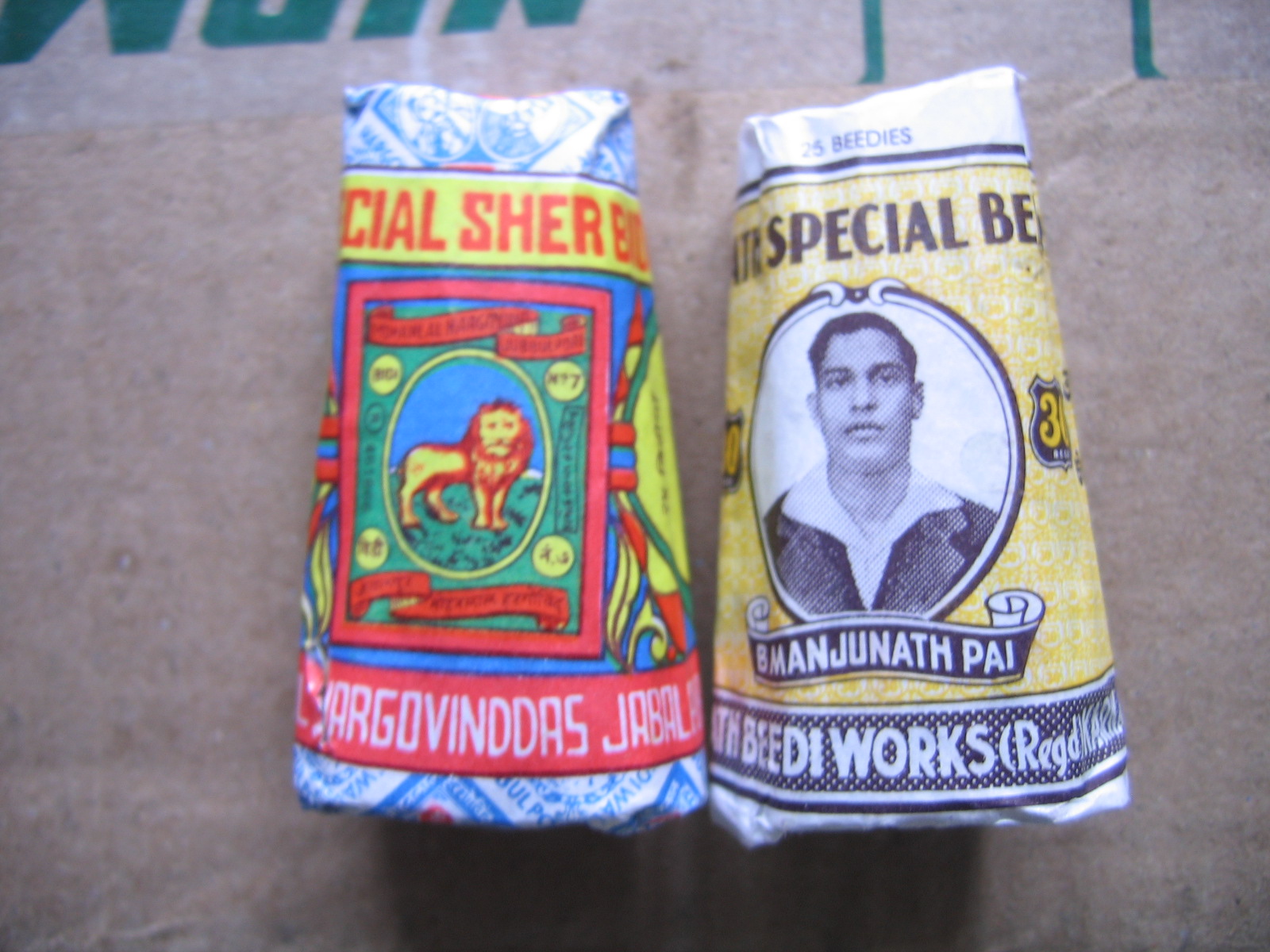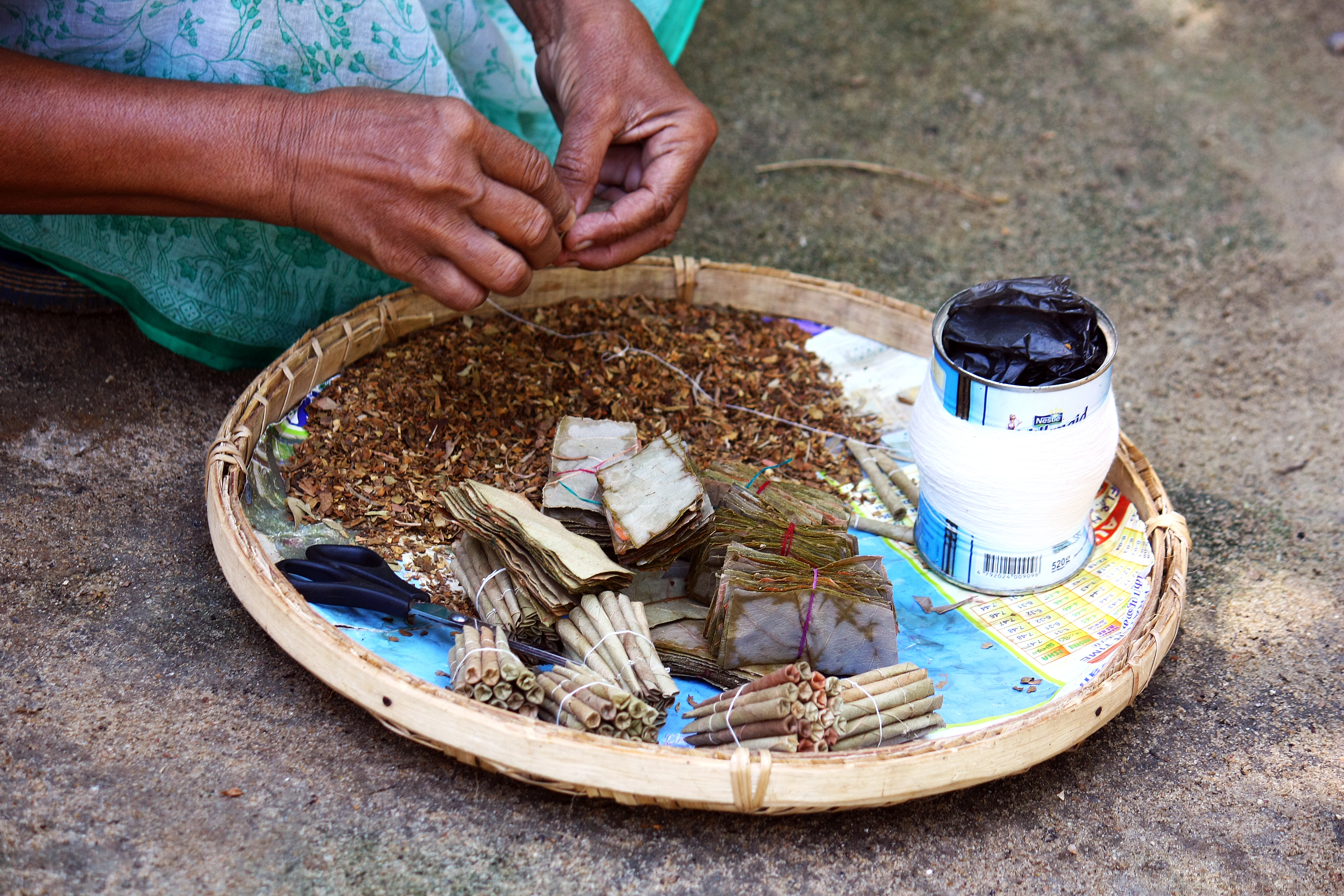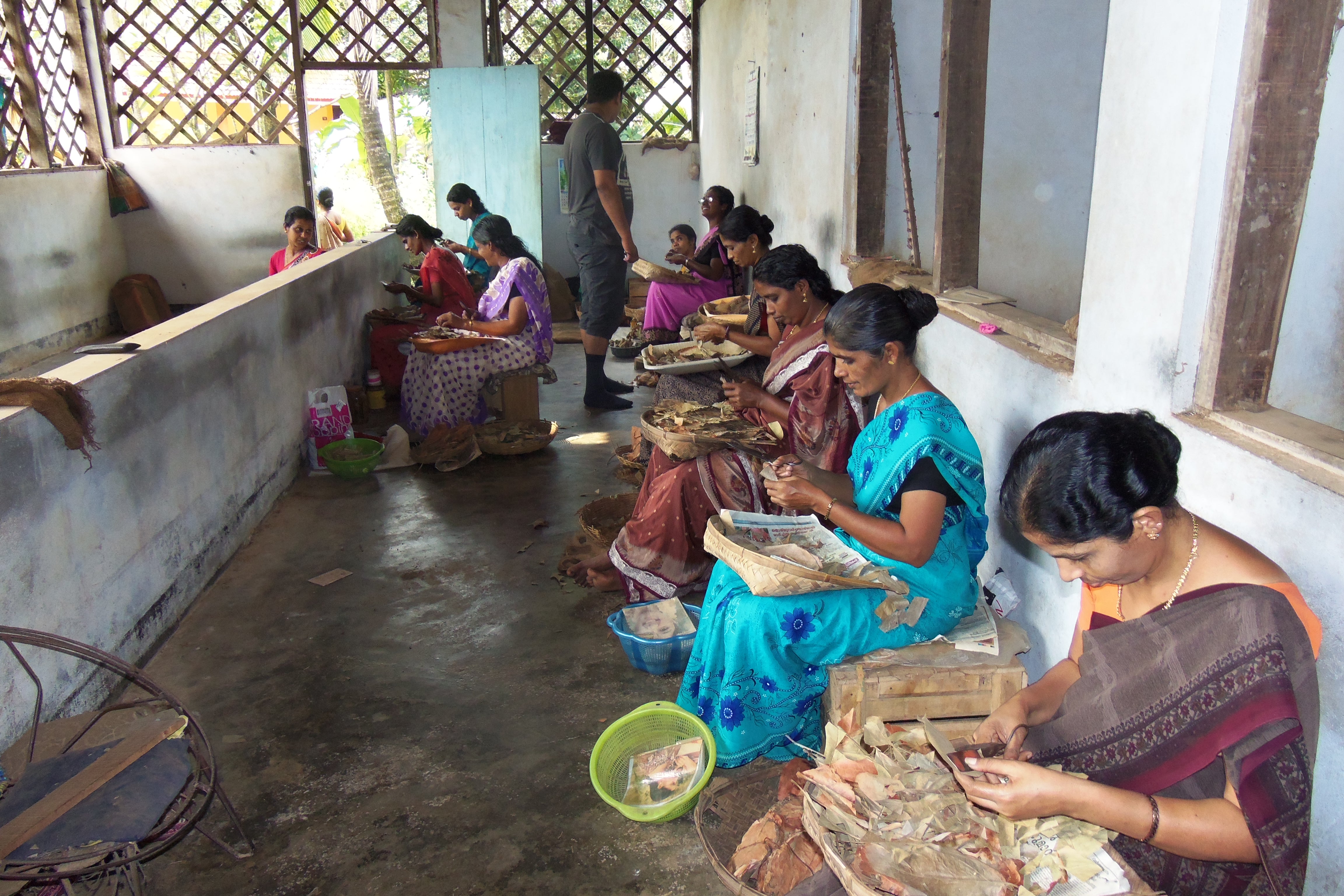Beedi on:
[Wikipedia]
[Google]
[Amazon]

 A beedi (also spelled bidi or biri) is a thin
A beedi (also spelled bidi or biri) is a thin
 Over 3 million Indians are employed in the manufacture of beedies, a
Over 3 million Indians are employed in the manufacture of beedies, a 
Action Plan for Beedi Women Workers
The International Labor Office Beedi {{Social issues in India Cigarette types Tobacciana Tobacco in India Desi culture Smoking in India

 A beedi (also spelled bidi or biri) is a thin
A beedi (also spelled bidi or biri) is a thin cigarette
A cigarette is a narrow cylinder containing a combustible material, typically tobacco, that is rolled into thin paper for smoking. The cigarette is ignited at one end, causing it to smolder; the resulting smoke is orally inhaled via the opp ...
or mini-cigar filled with tobacco flake and commonly wrapped in a tendu ('' Diospyros melanoxylon'') or '' Piliostigma racemosum'' leaf tied with a string or adhesive at one end. It originates from the Indian subcontinent. The name is derived from the Marwari word ''beeda''—a mixture of betel nuts, herbs, and spices wrapped in a leaf. It is a traditional method of tobacco use throughout South Asia and parts of the Middle East, where beedies are popular and inexpensive. In India, beedi consumption outpaces conventional cigarettes accounting for 48% of all Indian tobacco consumption in 2008.
History
Beedies were invented after Indian tobacco cultivation began in the late 17th century. Tobacco workers were the first to create them by taking leftover tobacco and rolling it in leaves. The commercial Indian beedi industry saw rapid growth during the 1930s probably driven by an expansion of tobacco cultivation at the time but also helped by Gandhi's support of Indian industry and Indian products. Perhaps due to this, educated classes in India grew to prefer beedies to cigarettes although this is no longer the case. Muslim leaders, calling cigarettes foreign products, have also endorsed beedies at times. By the middle of the 20th century, beedi manufacture had grown into a highly competitive industry. This stage of commercial production—at the height of the beedi's popularity—saw the creation of many new beedi brands as well as beedi factories employing upwards of one hundred, primarily male, beedi rollers. Factory-based beedi production declined as a result of increased regulation during the 1940s, '50s, and '60s, and beedi-making became acottage industry
The putting-out system is a means of subcontracting work. Historically, it was also known as the workshop system and the domestic system. In putting-out, work is contracted by a central agent to subcontractors who complete the project via remote ...
with a home-based women workforce predominantly employed only in the beedi rolling. In contrast, males continue to be employed in other aspects of beedi production.
Beedi smoking tends to be associated with a lower social standing, and these tobacco-filled leaves are inexpensive when compared to regular cigarettes. Those with a high social standing who do smoke beedies often do so out of the public eye; however, the cultural trend is changing.
A few of the major beedi companies are Ganesh beedi, Kaja beedi, Taj Mahal Beedi and Laxmi Biri.
Manufacture
 Over 3 million Indians are employed in the manufacture of beedies, a
Over 3 million Indians are employed in the manufacture of beedies, a cottage industry
The putting-out system is a means of subcontracting work. Historically, it was also known as the workshop system and the domestic system. In putting-out, work is contracted by a central agent to subcontractors who complete the project via remote ...
that is typically done by women in their homes. Analysis of bidi industry in India found that in spite of increase in profits worker wages declined and female workers were paid substantially less than male workers.
Workers roll an average of 500–1000 beedies per day, handling of tobacco flake. Handling tobacco and inhaling its dust is an occupational hazard for beedi workers as an increased level of chromosome aberrations was found in a scientific study.
The production of beedies is also popular in Bangladesh. According to the 2014 '' List of Goods Produced by Child Labor or Forced Labor'' published by the Bureau of International Labor Affairs, the informal sector in these countries employs underage children in the production of beedies "in response to consumer preferences".

Tendu leaf
Tendu (''Diospyros melanoxylon'') leaves make excellent wrappers, and the success of the beedi is due, in part, to this leaf. The leaves are in abundance shortly after the tobacco crop is cured and so are ready to be used in beedi manufacture. Collected in the summer and made into bundles, the leaves are dried in the sun for three to six days before being used as wrappers.Global popularity
Beedies, unlike cigarettes, must be drawn frequently to keep them lit, and doing so requires effort.North America
In the United States, beedies are treated like conventional cigarettes. They are taxed at the same rates, are required to have a tax stamp, and must carry the Surgeon General's warning. However, a study done in San Francisco showed that about four in ten packs of beedies did not contain the required warning label and seven in ten did not carry the tax stamp. 2006 statistics on beedi usage show that 2.9% of high school students in the United States take part in beedi smoking compared to 1.4% of those aged 18 to 24. Some beedies are flavoured. Both Canada and the US have banned flavoured cigarettes.United Kingdom
Beedis are currently legal in the UK and are subject to the same taxation as cigarettes. One must be aged 18 or over to purchase them.Health warnings
Beedies deliver morenicotine
Nicotine is a naturally produced alkaloid in the nightshade family of plants (most predominantly in tobacco and ''Duboisia hopwoodii'') and is widely used recreationally as a stimulant and anxiolytic. As a pharmaceutical drug, it is used fo ...
, carbon monoxide, and tar and carry a greater risk of oral cancers than conventional cigarettes. As with many other types of smoking
Smoking is a practice in which a substance is burned and the resulting smoke is typically breathed in to be tasted and absorbed into the bloodstream. Most commonly, the substance used is the dried leaves of the tobacco plant, which have bee ...
, beedies increase the risk of certain kinds of cancers, heart disease
Cardiovascular disease (CVD) is a class of diseases that involve the heart or blood vessels. CVD includes coronary artery diseases (CAD) such as angina and myocardial infarction (commonly known as a heart attack). Other CVDs include stroke, hea ...
, and lung disease. They may also be more harmful than other forms of tobacco consumption.
Frequency of ventilatory abnormalities was highest in the cigarette smokers. A lower prevalence of chronic bronchitis and abnormal ventilatory measurements in beedi smokers, as compared with cigarette smokers, was thought to be primarily due to low total consumption of tobacco. Some added influence of smoke produced by burning of the wrapper leaf and type of tobacco used in beedies could not be ruled out.
See also
* Paan * GutkaReferences
External links
Action Plan for Beedi Women Workers
The International Labor Office Beedi {{Social issues in India Cigarette types Tobacciana Tobacco in India Desi culture Smoking in India